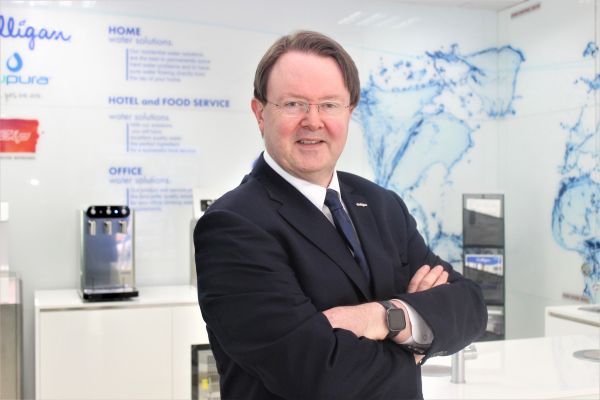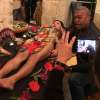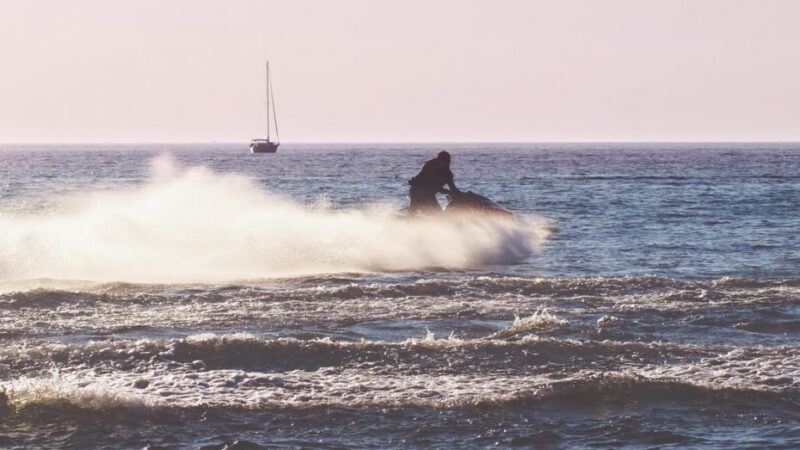He’s using the restrictions his injuries have placed on his body as tools for the physically and mentally demanding underwater pursuit.
And he has a new determination to rebuild his life and help others. Lee Umbers reports.
It was one devastating moment on the water that forever changed the life of wakeboarding champion Brad Smeele.
But it is to the water he is returning in a life-affirming new challenge on his journey from despair to acceptance and inspiration.
Smeele, 32, was left a quadriplegic in a horror accident at Lake Ronix in Florida trying to repeat his world-first double backflip that won him the sport’s Trick of the Year.
Five years on, at two suburban Auckland swimming pools, the 32-year-old is preparing for another breakthrough – going into the ocean as a freediver. The sport involves breath-holding until resurfacing rather than the use of breathing apparatus such as scuba gear.
Advertisement
Read more:
•
Quadriplegic wakeboarder able to talk
•
Injured champion: I want to walk again
•
Brad Smeele returns to the site of accident
Smeele is using the restrictions his injuries have placed on his body as tools for the physically and mentally demanding underwater pursuit.
“I’ve been locked in a wheelchair locked in this position,” he says.
“I’ve had to become so calm, and so good at being Zen and being present.
“What I’ve been forced to go through [has prepared me for] freediving.
“Me versus the elements, and remaining calm and knowing what I can and can’t do, and trusting in the people around me.”
/arc-anglerfish-syd-prod-nzme.s3.amazonaws.com/public/4DGLY7WJPFFX7INSAVIGCCQXZI.jpg)

Every couple of weeks a group of friends accompany Smeele to the AUT Millennium Pool on Auckland’s North Shore or Newmarket’s Olympic Pools & Fitness Centre.
They lower him into the pool, swim him down to the 4.4m bottom in the case of the Olympic pools, taking turns to hold him in position until he is ready to return to the surface.
“[The] longest I’ve held my breath is 5 minutes and 10 seconds.”
A nod of the head tells his underwater minders everything is good, a shake means get him back up.
He is hoping to get into the sea around the North Island this summer when the water warms up.
/arc-anglerfish-syd-prod-nzme.s3.amazonaws.com/public/V5EQZNODURCZ7NUKFYLM2VTCDE.jpg)

He will attempt to get doctor’s clearance to do a formal freedive training course first. And is working out extra safety measures including getting a custom-made buoyancy device.
He will reach out to the New Zealand freedive community for extra people to accompany his friends to take him into the ocean.
Smeele doesn’t have a real target for holding his breath.
“I’m not trying to set any records. It’s more about getting to the point where I’m comfortable holding my breath longer than the people that are taking me under… Knowing that they don’t have to be worried about me and my breath hold.
“I’m pretty happy at the moment with five minutes. Six minutes would be kind of cool – it’s good to hit those numbers. But I’m just taking it slowly at this point, just building up as I go. And working with a breathing trainer in Australia, who’s giving me some exercises.”
“For me it’s not about pushing those limits too much, ’cause I want to stay safe.
“If I can hold my breath for five or six minutes, if just means that I can spend a comfortable amount of time under water, checking out the fish and reef and coral and whatever else is around.”
/arc-anglerfish-syd-prod-nzme.s3.amazonaws.com/public/DH2YMPVORFDBDOEN3ZIUTKUKN4.jpg)

/arc-anglerfish-syd-prod-nzme.s3.amazonaws.com/public/RHODXZIWKJHWNBZKP4QVVTGDSI.jpg)

Freediving provides challenge and a sense of joy for Smeele, who had “felt like I couldn’t have fun any more”.
“It’s about being weightless, being underwater and not being restricted by a wheelchair.”
Smeele has also sought advice from Kiwi world champion and record holder William Trubridge.
“We just had a good chat about it and he’s put a few suggestions across.”
Smeele’s quest will feature in a documentary aimed for release at the end of next year.
The film will also lay bare his highs and lows from wakeboarding sensation to the crash that shattered his body and dreams.
From the depths of depression, to a determination to rebuild his life and help others has seen Smeele start a foundation to boost spinal cord injury research and take a message of hope to schools and businesses around New Zealand.
/arc-anglerfish-syd-prod-nzme.s3.amazonaws.com/public/CJL3YNRMSBGLBOQQH4MONYAMQM.jpg)

Smeele, who grew up in Parnell, was introduced to wakeboarding by a family friend at 12.
His mother, Linda Smeele, was a national women’s waterski record holder.
At 17, he won the world junior championships, in Spain, and from then spent consecutive summer seasons competing in the US.
At 188cm, and a toned 95kg from his sport, he also modelled and was a Cleo Bachelor of the Year contestant.
Landing a world-first trick in Germany in 2014 – a ramp-to-ramp double backflip with a 180-degree rotation and backwards landing – propelled Smeele to renewed prominence in the sport.
He was attempting to repeat it a fortnight later, on the morning of July 6, during filming at Lake Ronix for a wakeboarding movie, when disaster struck.
Opening out of his tuck to execute a first flip, he realised he had gained too much height and was headed for further down the ramp than he would normally land.
/arc-anglerfish-syd-prod-nzme.s3.amazonaws.com/public/TCOFG3347FFO5BHFLMRXSEYWK4.jpg)

He tried to back out of the move but it was “a split second too late”.
Tumbling forward towards the ramp, “everything slowed down and I was like I’m either going to go face-first into this, or can tuck and roll like a breakfall.
“I tucked my head under but then didn’t get any push off my legs to get my head and shoulders under.
“The back of my head hit and shoulders hit and forced my head down into my chest.
“And that’s when everything kind of went black.”
Smeele’s C4 vertebrae was shattered by the impact.
He was unconscious, his face under water, when rescuers got to him.
He came to as they prepared to perform CPR on him on a paddleboard.
Medivaced by helicopter to hospital, “I couldn’t move my arms and legs, couldn’t feel anything.
/arc-anglerfish-syd-prod-nzme.s3.amazonaws.com/public/XYSCPIOVQZELNBLC3RCIQTMXJU.jpg)

“By the time I got to the hospital, I knew that I’d messed things up.”
Friends and family flew in from around the world as he underwent a nine-hour surgery to remove bone fragments and stabilise his spine.
He spent five weeks in ICU and a further three months in a rehab centre in Atlanta before being flown back to New Zealand .
On his return, he was treated at Auckland Spinal Rehabilitation Unit and then the Laura Fergusson Rehabilitation centre.
Kiwis rallied around their fallen champion, donating more than $230,000 for his recovery.
Smeele put on a brave face, committing himself to an intense rehab schedule and talking of getting back on his feet.
When people asked him how he was going, he would say things were good.
“I was doing it for my family and my followers, all my friends, the wakeboard community, everyone who had donated.
“I didn’t like the idea of putting anything negative out there.”
But behind the visage he was despondent.
/arc-anglerfish-syd-prod-nzme.s3.amazonaws.com/public/UCCHFYZ2GFFNRE23W6SQLA2A5I.jpg)

“I had put so much importance on the physical me.
“With all that stripped away, I was left feeling pretty empty.
“Everything that I saw that I couldn’t do any more really hit me.”
Even the sight of people holding hands felt like a slap in the face.
“It was almost like the death of myself and I got to witness my funeral.
“All these people talking about me and about my career (like) people would do for someone who died – but I was still alive.”
Had he hit the ramp face-first, the impact may well have been fatal.
“I’ve replayed (the accident) so many times in my head, especially in those first couple of years.
“It was something that haunted me for a long time.
“I just kept going through every other scenario that I could have done.
“Why didn’t I do this, why didn’t I do that?
“But another scenario could have ended up with me dying.”
/arc-anglerfish-syd-prod-nzme.s3.amazonaws.com/public/5PFFCMPSWVDOPPLRY6X2DE2QUM.jpg)

Smeele says he went through stages of grief – “from disbelief, to anger and then all the way through to acceptance”.
That last stage happened in 2017, after being shown an MRI scan which revealed scar tissue in his spinal cord.
“It was big, twisted up scar tissue, like a landslide over a highway.
“No matter how much you think you can get through it, it’s not going to move.”
Smeele “hit rock bottom at that point”.
But the following day he visited the Spinal Cord Injury Research Facility at Auckland University, where he was encouraged by research fronts they are working on.
“I’d taken on so much myself – seven physio sessions a week. Every day it was my job to get myself moving again.
“And this (MRI scan) was a slap in the face, going in order for anything to happen something needs to happen to the scar tissue.
“I [thought] if I can’t do this physically, and the research needs to do it – then I’m going to do what I can to speed the research up.”
Smeele founded The Movement Collaborative, aiming to speed up the search for a cure for spinal cord injury by driving fundraising campaigns and facilitating collaboration between researchers.
Part of that fundraising, and an outward show of his acceptance, involved him having a haircut last September – his first time since the accident.
/arc-anglerfish-syd-prod-nzme.s3.amazonaws.com/public/YDJZNRFC2NE57H6FJDRIUSQT4Y.jpg)

He had joined friends who in the aftermath of the crash pledged to grow their hair until he walked again.
Smeele says he used to hate the word acceptance.
“To me it felt like giving up. I thought it was accepting this is how my life is going to be forever. Whereas I just changed it to, this is where I am.
“And by accepting that, then I’ve got this starting point to work from.”
He takes that message to others who have suffered recent spinal cord injuries, usually young men, at the Auckland Spinal Rehabilitation Unit.
One is a young rugby player, who he keeps in contact with.
“I’d been where he was at that time, I’d felt as low as he was feeling. [I] was able to connect with that and made him feel not so alone.
“[He] knows that I was a couple of years ahead of where he was at, so he could see that mentally I was doing really well and that he could get to that point.”
Smeele is also now sharing his journey with audiences at schools and businesses around New Zealand.
“I love being able to inspire people, and open up to people who are going through struggles.”
One of the points he makes in his public speaking engagements, especially at high schools, is the danger of comparing yourself to others, including falsely glamorous portrayals on social media.
/arc-anglerfish-syd-prod-nzme.s3.amazonaws.com/public/44WIV6MYYFDFHC3NTOQZIPZBEI.jpg)

“Showing them that they are enough and that they just need to own themselves. Don’t buy into everything other people are saying about you.
“You’ve just got to believe in yourself and what you’re doing, and go for it.”
As well as his upcoming documentary, Smeele is committing his life transformation to print.
He is 30,000 words into an around 100,000-word commissioned autobiography, typing with a mouth-held stick – which he also uses for his cellphone, a “crucial” connection to the wider world.
With no movement below his shoulders other than a flicker of a bicep and twitch of a thumb, he operates his electric wheelchair by blowing into a control tube.
He lives with flatmates on the North Shore; with flatmates and has a round-the-clock team of caregivers.
Smeele is still certain a breakthrough will come in treatment of spinal cord injuries.
But he has changed his own expectations.
“A cure to me would be moving my arm, or being able to scratch my nose, or feed myself – not necessarily jump out of the wheelchair and go for a run, or necessarily wakeboarding again.
“Eventually I think it will get to that point, but I think we’re still a long way off. I’d say within the next 10 years there’ll be something.”
Smeele hopes his documentary, which he also aims to include him doing a tandem skydive, will inspire audiences.
“I’d love for people to walk away from it going, this guy’s living his life regardless. What could I be doing more with my life?”
As for a perfect ending – “I don’t see myself walking.
“Obviously that would be cool, but maybe that’s documentary number two.”





Recent Comments